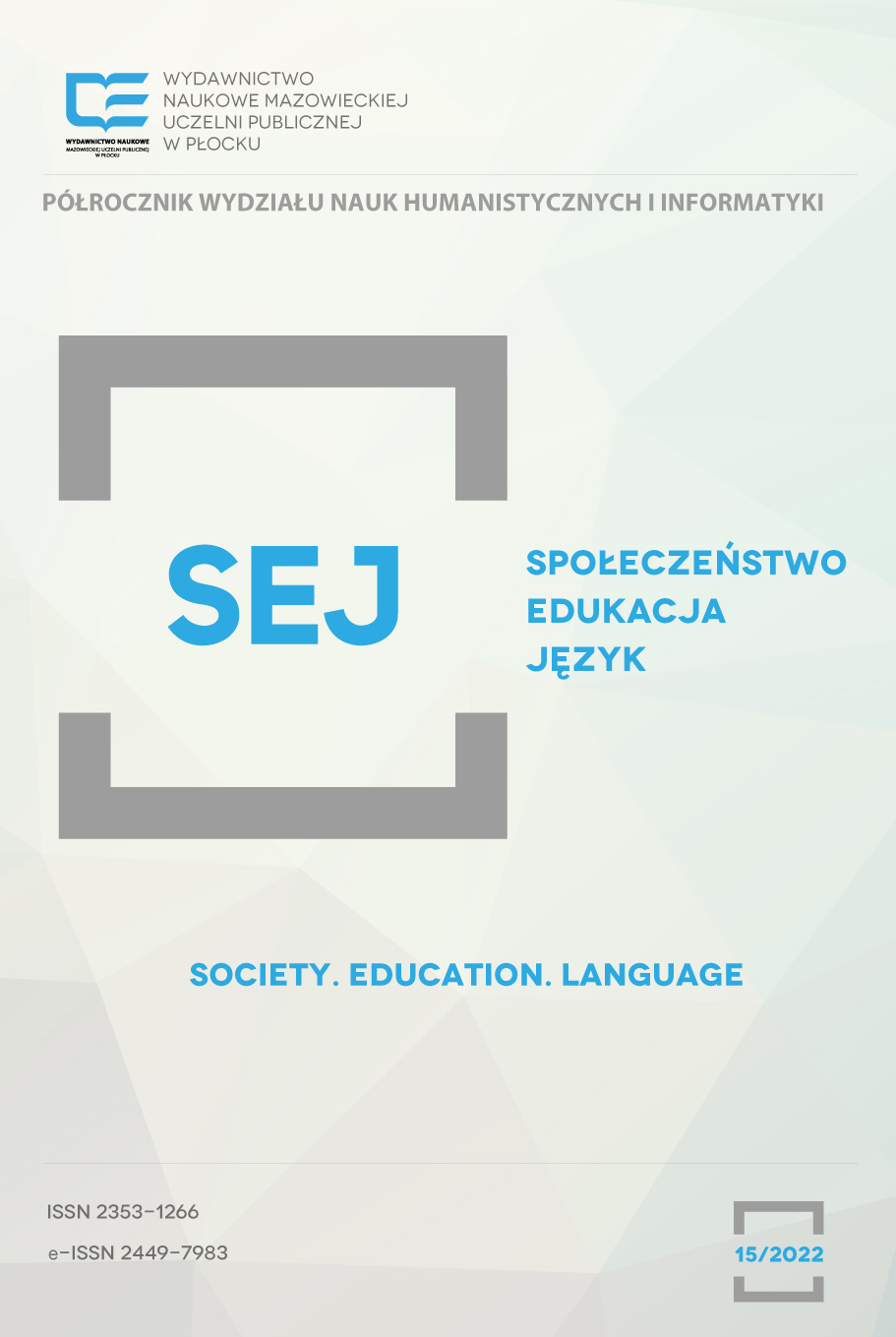BECOMING BILINGUAL WHEN LEARNING ABROAD;
LEARNING A SECOND LANGUAGE IN THE TARGET LANGUAGE LEARNING CONDITIONS
DOI:
https://doi.org/10.19251/sej/2022.15(6)Keywords:
bilingualism, immigrant learners, target language, linguistic distanceAbstract
This study examines the correlation between selected factors and English proficiency levels among immigrants. A sample of 50 learners participated in this research, which took place in the ESL classroom in Communicate School in Manchester, UK. The results lead to conclusions that English proficiency among foreign-born persons is strongly affected by both individual and structural covariates. As expected, immigrants’ English fluency was affected positively by economic development and negatively by linguistic distance. Additionally, individual factors also exerted a significant impact on English language fluency.
References
Blau, P. M. (1977). Inequality and Heterogeneity: A Primitive Theory of Social Structure. New York: The Free Press.
Breton, R. (1964). Institutional Completeness of Ethnic Communities and Personal Relations to Immigrants. American Journal of Sociology, 70(2), 193-205.
Census 2011. (2018). Regional ethnic diversity. Newport: Office for National Statistics.
Chiswick, B. R., & Miller P. W. (1995). The Endogeneity between Language and Earnings: International Analyses. Journal of Labor Economics, 13(2), 246-88.
Chiswick, B. R., & Miller, P. W. (2001). A Model of Destination-Language Proficiency Acquisition: Application to Male Immigrants in Canada. Demography, 38, 391-409.
Chiswick, B. R., & Miller, P. W. (2004). Linguistic Distance: A Quantitative Measure of the Distance Between English and Other Languages. IZA Discussion Papers, (1246).
Chiswick, B. R., & Miller, P. W. (2007). Modeling Immigrants’ Language Skills. IZA Discussion Papers, (2974).
Espenshade, T. J., & Fu, H. (1997). An analysis of English-language acquisition among U.S. immigrants. American Sociological Review, 62, 288-305.
Freedom House. (2018). Freedom in the World 2018. Washington, D.C., New York, NY: Population Reference Bureau.
Grenier, G. (1984). Shifts to English as usual language by Americans of Spanish mother tongue. Social Science Quarterly, 62, 537-550.
Jasso, G., & Rosenzweig, M. R. (1990). The new chosen people: Immigrants to the United States. New York: Russell Sage.
Lazear, E. P. (1999). Culture and Language. Journal of Political Economy, 107(6), 95-126.
Lindstrom, D. P., & Massey, D. S. (1994). Selective emigration, cohort quality, and models of immigrant assimilation. Social Science Research, 23, 315-349.
Loo, C. M. (1985). The ‘’biliterate’’ ballot controversy: Language acquisition and cultural shift among immigrants. International Migration Review, 19, 493-515.
Massey, D. S. et al. (1993). Theories of International Migration: A Review and Appraisal. Population and Development Review, 19, 431-466.
Simons, G. F. & Fennig Ch. D. (Eds.). (2018). Ethnologue: Languages of the World (21th ed.). Dallas, TX: SIL International.
Stevens, G. (1992). The social and demographic context of language use in the United States. American Sociological Review, 57, 171-185.
Stevens, G. (1994). The English language proficiency of immigrants in the U.S. In J. Passel & B. Edmonston (Eds.). Immigration and ethnicity: The integration of America’s newest immigrants, 63-86. Washington, DC: Urban Institute.
Stevens, G., & Schoen, R. (1988). Linguistic intermarriage in the United States. Journal of Marriage and the Family, 50, 267-279.
Stevens, G., (1999). Age at Immigration and Second Language Proficiency Among Foreign-Born Adults. Retrieved May 12, 2018, from https://www.researchgate.net/publication/ 236008619_Age_at_Immigration_and_Second_Language_Proficiency_Among_Foreign-Born_Adults
Tubergen, F. A. V., & Kalmijn, M. (2009). A dynamic approach to the determinants of immigrants’ language proficiency. Retrieved June 3, 2018, from https://www.rug.nl/research/ portal/files/14487281/2009-TubergenFv-Dynamic.pdf
World Bank. (2018). GDP (current US$). Washington DC: World Development Indicators.
